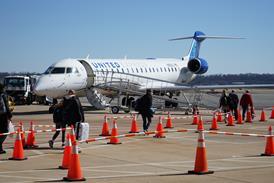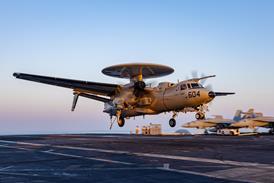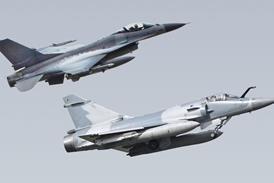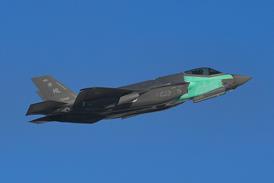General Electric (GE) today revealed that critical technologies used in the core of the Leap-series turbofans are derived from a project funded by the US military.
The engine maker also foresees that continued military investments, such as the US Air Force's advanced versatile engine technology (ADVENT) programme, will drive a new wave of commercial turbofans even beyond the Leap-1B.
The military-civil collaboration on the Leap-series engine in some ways recalls the GE-Snecma joint venture's previous success with the CFM56 turbofan.
The CFM56 -- the most popular commercial engine in history -- was designed using Snecma's low-pressure section and a high pressure section derived from the GE F101, which was developed for the North American B-1A bomber and now powers the Boeing B-1B Lancer.
"That was a very synergistic environment and I think that's playing out all over again here with ADVENT and Leap," said Jean Lydon-Rodgers, GE's vice president and general manager of military systems.
CFM International has previously revealed that the Leap series will feature GE's second-generation twin-annular pre-swirl combustor and a blisk fan in the compressor.
But it is now clear that GE intends to apply special technologies funded under the ADVENT programme, such as ceramic matrix composites in moving components of the turbine.
The ADVENT project is funded by the military primarily because it seeks to introduce a third-stream of bypass flow for fighters and bombers. The improved bypass ratio is expected to improve fuel efficiency by 25% and increase range by 30% in the next generation of military combat aircraft.
Lesser-publicised are ADVENT's contributions in the engine's high-pressure sections, which GE can directly convert into applications for the civil market.
Such transfer of technology is especially important for GE as the company recovers from losing the F136 alternate engine for the Lockheed Martin F-35, which was terminated last March after a five-year struggle between the company and the US Department of Defense.
Without the funding support provided by the F136, GE's military engines division can continue making heavy investments and count on generating a return in the near-term from the civil market.
The cross-over of commercial and military technologies is not always simple. Even in the early 1970s, GE had to overcome objections by the US Department of State to transfer F101 technologies into the CFM joint venture. CFM's new Leap engine has been adopted by the Airbus A320neo and the Boeing 737Max, and also by China's Comac for the C919 narrowbody.
So far, the Chinese interest in the ADVENT-based Leap technologies have not created a stumbling block for GE's strategy. "There hasn't been an issue," GE said.
Company officials expect that ADVENT will only be the beginning. The Leap engine features a core with an overall pressure ratio of 40:1. The USAF is funding GE and Rolls-Royce to develop an all-new compressor with pressure ratios possibly reaching 50% or more higher.
The USAF's highly embedded efficient turbine engine (HEETE) is not expected to be ready for military applications until 2018, but GE believes the key technologies will be available for commercial engines even sooner, Lydon-Rodgers said.
Source: Air Transport Intelligence news























